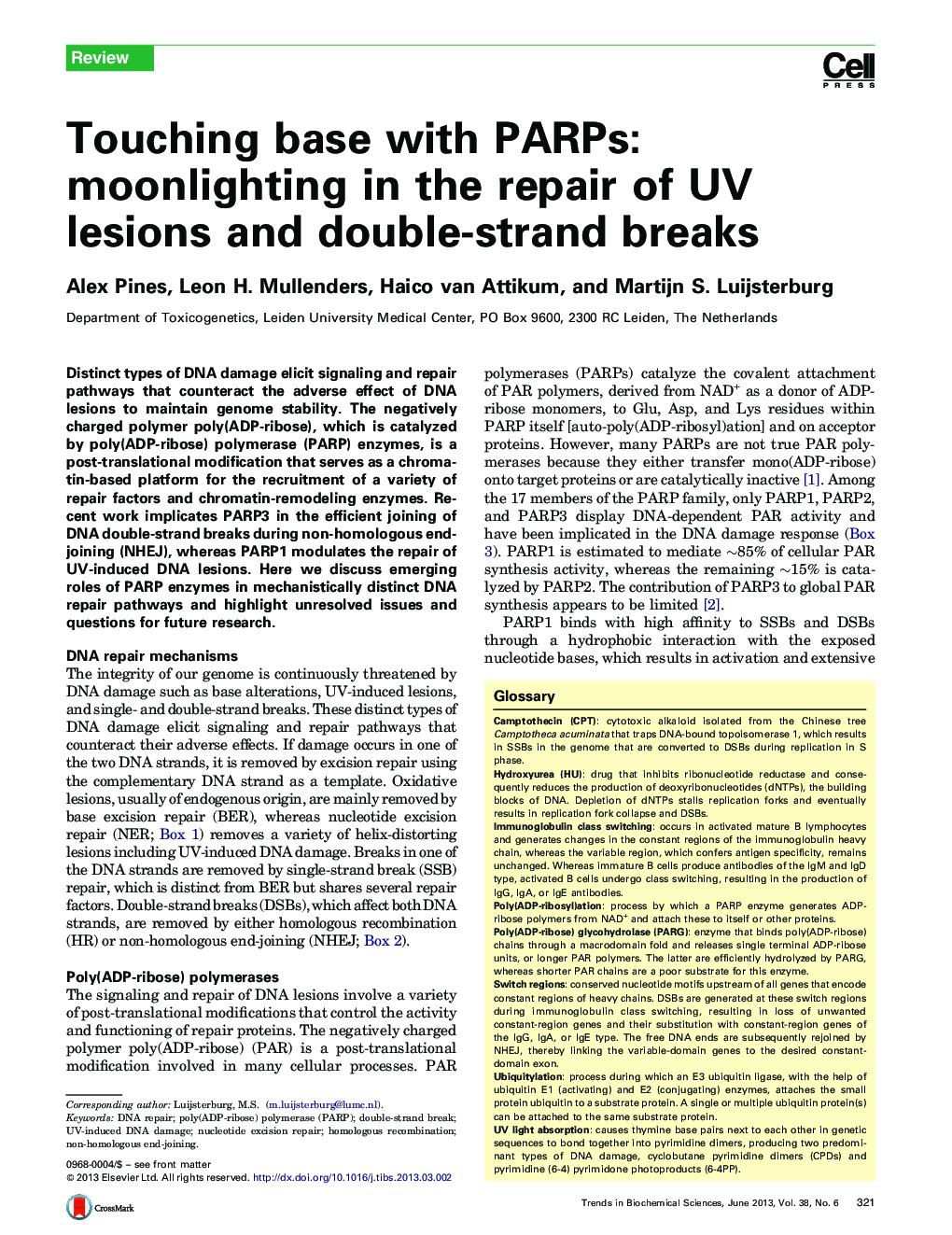| Article ID | Journal | Published Year | Pages | File Type |
|---|---|---|---|---|
| 2031652 | Trends in Biochemical Sciences | 2013 | 10 Pages |
Distinct types of DNA damage elicit signaling and repair pathways that counteract the adverse effect of DNA lesions to maintain genome stability. The negatively charged polymer poly(ADP-ribose), which is catalyzed by poly(ADP-ribose) polymerase (PARP) enzymes, is a post-translational modification that serves as a chromatin-based platform for the recruitment of a variety of repair factors and chromatin-remodeling enzymes. Recent work implicates PARP3 in the efficient joining of DNA double-strand breaks during non-homologous end-joining (NHEJ), whereas PARP1 modulates the repair of UV-induced DNA lesions. Here we discuss emerging roles of PARP enzymes in mechanistically distinct DNA repair pathways and highlight unresolved issues and questions for future research.
